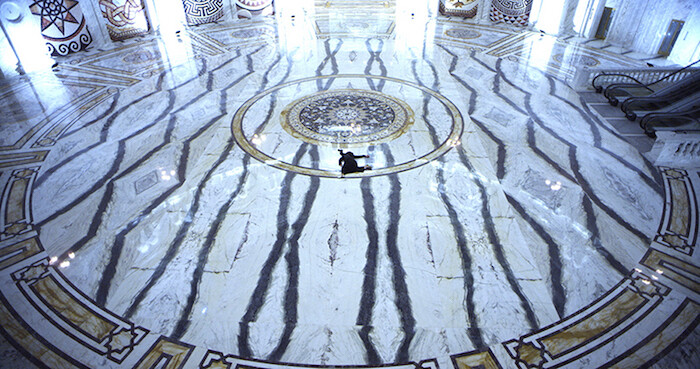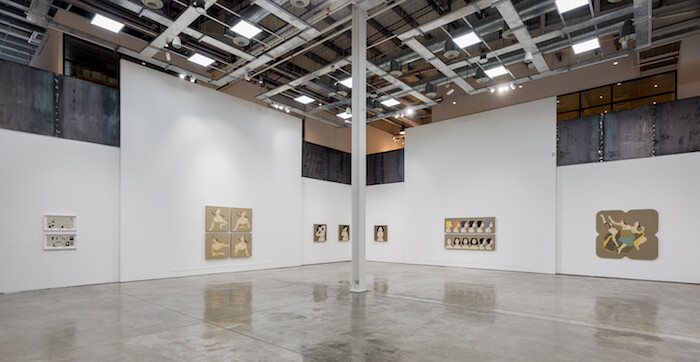Categories
Subjects
Authors
Artists
Venues
Locations
Calendar
Filter
Done
March 28, 2017 – Review
Sophia Al-Maria’s “EVERYTHING MUST GO”
Anna Wallace-Thompson

Qatari-American artist Sophia Al-Maria has long examined the architecture, urban planning, and customs of what she calls “Gulf Futurism,” including the phenomenon of mall culture. Her solo show in Dubai presents a new iteration of works exhibited last year at the Whitney Museum, New York, which further that investigation.
The room-sized installation The Litany (2016) features supermarket trolleys (some upright, some overturned) huddled around the main gallery’s central column like a rugby scrum comprised of brightly colored metallic potato chip packets, cheap mobile phones, and mini jello snack pots. The brands presented here are iconic for those who grew up in the Gulf. Labels such as Mr Krisp and Ali Baba evoke a kitsch nostalgic throwback to 1990s childhoods, and their jewel wrapper colors give the installation the appearance of a candy pile. This cluster is surrounded by a hundred or so digital prints of stills from the digital videos playing on the phones, with phrases including “Panic,” “Teargas Toner,” “Methane Gel,” and “Post-Truth Plumper” emblazoned on garish backgrounds.
A dark cavern, semi-hidden in the corner of the space, houses the 16-minute video Black Friday (2016). Filmed amidst expanses of gleaming marble in one of Doha’s yet-to-open mega malls, Black Friday is …
October 12, 2016 – Review
Hayv Kahraman’s “Audible Inaudible”
Melissa Gronlund

I passed a group of women wearing hijab on the beach the other day, talking in Arabic and English. They had pulled their chairs into the water and were sitting with the bottom of their skirts in the sea. “It’s hard for our sex to find happiness,” I heard one remark as I walked by. It was a comment so profound it almost felt scripted: this scene of women, draped in emblems of their gender, idly dropping historical truths.
Homosociality always makes the outsider covetous of insider knowledge. “What do women talk about,” I imagine men asking, “when we are not there?” Women alone together become not a group but a clique, a coven, a harem. In the Western imaginary of the Middle East, this assumption of difference is amplified by the Orientalization of Arabs, and the popular portrayal of Western–Middle Eastern relations as fundamentally adversarial. For US soldiers during the Iraq War, for example, curiosity about the other turned into paranoia and fear, when any Iraqi or group of Iraqi men could be a threat. In her current show at The Third Line, Hayv Kahraman explores these layers of cultural exclusion, desire, and apprehension, drawing a line between the representation …